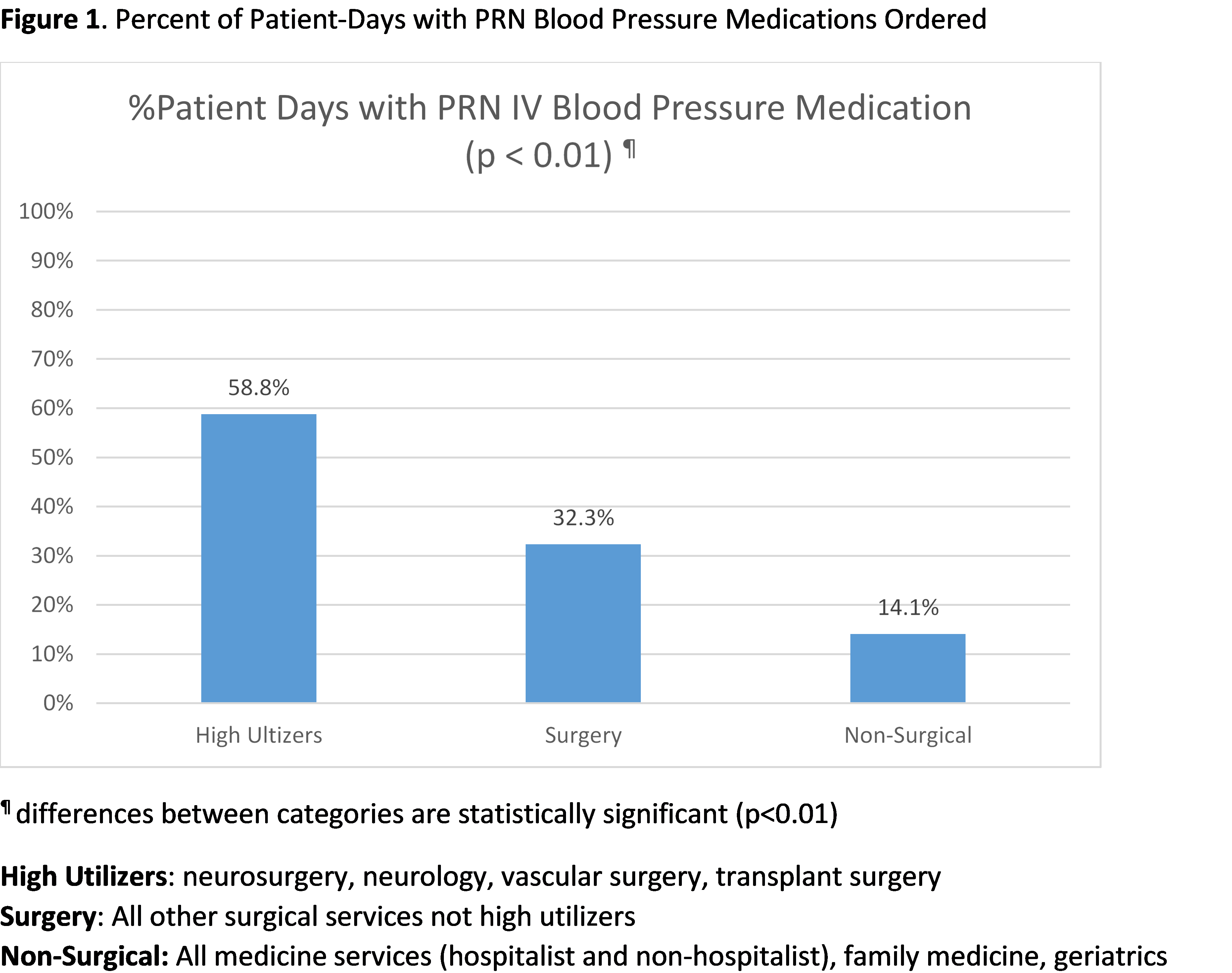Background: Intravenous (IV) anti-hypertensive medications such as labetalol and hydralazine are commonly administered as needed or “prn” to asymptomatic patients in the hospital with elevated blood pressure. This practice may lead to patient harm (such as hypotension or stroke) and increased costs without any known benefit. Much attention has been focused on this issue in hospitalized medical patients but less so on other hospital services. In our efforts to reduce the overuse of these medications, we examined the use of “prn” IV anti-hypertensive orders among different services, in particular comparing use on surgical services versus medical services.
Methods: The electronic medical record at our academic medical center was queried for all hospitalized patients admitted between 2018-2019 with at least one significantly elevated blood pressure (systolic > 180 mmHg or diastolic > 110 mmHg). We excluded patients with diagnoses associated with symptomatic hypertensive emergency (such as intracranial hemorrhage, acute heart failure or hypertensive encephalopathy). These patients were reviewed for active “prn” orders for IV anti-hypertensives. Our outcome measure was the percentage of total patient-days that hypertensive patients had active IV “prn” anti-hypertensives ordered. These services were grouped into “High Utilizers” (neurosurgery, neurology, vascular surgery, transplant surgery), “Surgery” (other surgical services not high utilizers) and “Non-Surgical” (all medicine services, geriatrics and family medicine).
Results: 17,093 patients (totaling 176,645 patient-days) met study criteria. Overall, there were 53,253 patient-days (30.1%) with active “prn” orders for IV labetalol, hydralazine or enalapril. In the sub-categories described above, “High Utilizers” had active “prn” orders for 58.8% of patient-days, “Surgery” had “prn” orders 32.3% of patient-days and “Non-Surgical” had “prn” orders 14.1% of patient-days (Figure 1). This was statistically significant (p-value < 0.01).
Conclusions: Even when excluding high-utilizing services (with potentially more robust evidence behind aggressive blood pressure control), surgical services utilized “prn” IV antihypertensive orders at a significantly higher rate than medical services. As in medicine, a paucity of data exists supporting the clinical benefit of this practice in surgical patients, but there are known risks associated with this practice. Targeting the use of “prn” IV anti-hypertensives by surgical services has the potential to reduce overuse of resources and reduce patient harm.

